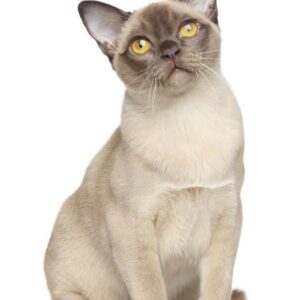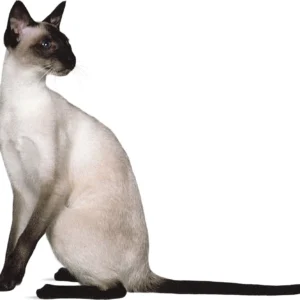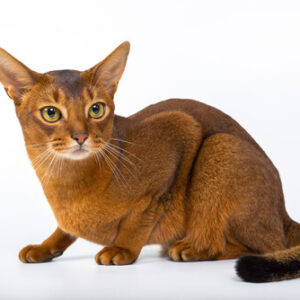Birman Cat Breed:
Active: Birman cats are moderately active. They enjoy to snuggle as much as the next cat and enjoy playing games as well. They are not overly active or demanding but they certainly love to be with their families and loved ones.
Size: Birman cats are medium in size, weighing between 6 to 12 pounds.
Characteristics: The medium in size Birman cat has a very distinctive look. They are born pure white and their unique shades come with age. They have a muscular body with a round head. They have a Roman nose and round, wide-set eyes that are a beautiful shade of blue.
Temperament: Birman cats have an adorable and sweet appearance and their personalities match. They are wonderfully affectionate cats that are loving and loyal. They enjoy the company of others and make ideal family pets. They are a quiet breed that are not as physically after as other felines but, they are incredibly smart and curious.
Care: Because the Birman is a single coat cat, with no undercoat, their fur is unlikely to mat. Simply combing their coat once per week will keep their long, silky coat looking lovely. Additionally, trim their nails and clean their ears as needed. Lastly, be sure to brush your Birman’s teeth to prevent periodontal disease.
Coat: The coat of the Birman cat breed is medium to long, beautiful and silky to the touch. They have no undercoat and the thickness of coat varies seasonally. Coat colors come in seal point, blue point, chocolate point, lilac point, and various parti-color point and lynx point colors. Paws have white gloves that extend up the back, called laces.
Origin: The origins of the Birman cat breed are shrouded in folklore and legend. As the story goes, there were many white cats living in the temples of Burma (Myanmar). The Kittah priests loved these white cats and it was believed that the cats carried the souls of Priests that had passed away (this concept is known as transmutation). Trim-Kyan-Kse is the Goddess of Transmutation and one of the priests, Mun-Ha worshipped her every night. Mun-Ha would bring along Sinh (one of the white cats), to worship. When the temple was raided, Mun-Ha was attacked and, as he was dying, Sinh rested a paw on Mun-Ha.
The legend tells that, as Sinh rested his paw on Mun-Ha, his coat color changed from white to a golden color, his eye color changed from yellow to a shade of sapphire blue, and his legs and head became a dark brown color. Sinh’s paws did not change and remained a bright white, which was a sign of his master’s purity of spirit. When Sinh refused to eat for seven days after Mun-Ha’s passing, Sinh died as well, and carried Mun-Ha’s spirit into eternity. It is a truly beautiful story of the beginning of the Birman cat breed, though, probably not the real story of how the Birman breed came to be. The true story of the Birman cat breed begins in 1919, in France.
There are actually two versions of the story of two Birman cats arriving in France. One in which the same temple was again attacked and the priests and their cats were rescued by two Westerners. The priests were so thankful that they thanked the Westerners with two of their Birman cats. The other account tells of a man, named Mr. Vanderbilt, that purchased two Birman cats from a former servant of the temple Lao-Tsun. But, either way, in both stories the male cat (Maldapour) died on the ship to France but before he died, impregnated the female cat (Sita). Sita gave birth to a litter of kittens and the kittens became the foundation of the breed in France. As the breed grew and gained popularity, it was formally recognized in France, and additionally, the first breed standard was written in 1925.
As was the case with many cat breeds, the breed greatly struggled during World War II and, in fact, almost became extinct. The Birman cat breed made its way to the United States in 1959 and was accepted for championship status by the CFA in 1967. The Birman cat breed is now recognized by all major associations and has continued to thrive over the years. Now, it is a well-loved and well-respected breed among cat fanciers.
Be the first to review “Birman” Cancel reply
Related products
kittens
kittens
kittens
kittens
kittens
kittens
kittens
kittens





















Reviews
There are no reviews yet.